Using Striking Distance Keywords & Search Console for Link Targets
Aug 27, 2024
Written by Casey Bjorkdahl

Casey Bjorkdahl is one of the pioneering thought leaders in the SEO community. In 2010, Casey co-founded Vazoola after working for a Digital Marketing Agency for five years in New York City. Vazoola is now one of the fastest growing and most widely recognized SEO marketing firms in the country.

What’s a practically surefire way to build links and boost search rankings?
Would you believe a free tool can give you everything you need to identify the best link targets?
As most any successful website owner can tell you, targeting the right keywords can make all the difference in a website’s search engine rankings. But how do you find them?
Google Search Console is an invaluable tool that can help identify the best target link opportunities.
By focusing on keywords that are on the cusp of reaching the top of search results—known as "striking distance" keywords—you can boost your organic traffic with targeted link-building efforts.
Key Takeaways
-
Google Search Console is a powerful tool for identifying keywords that are close to achieving top rankings.
-
By targeting "striking distance" keywords, you can effectively boost your site's visibility with strategic link-building.
-
You can leverage GSC data to prioritize link-building efforts.
Table of Contents
What Are Striking Distance Keywords?
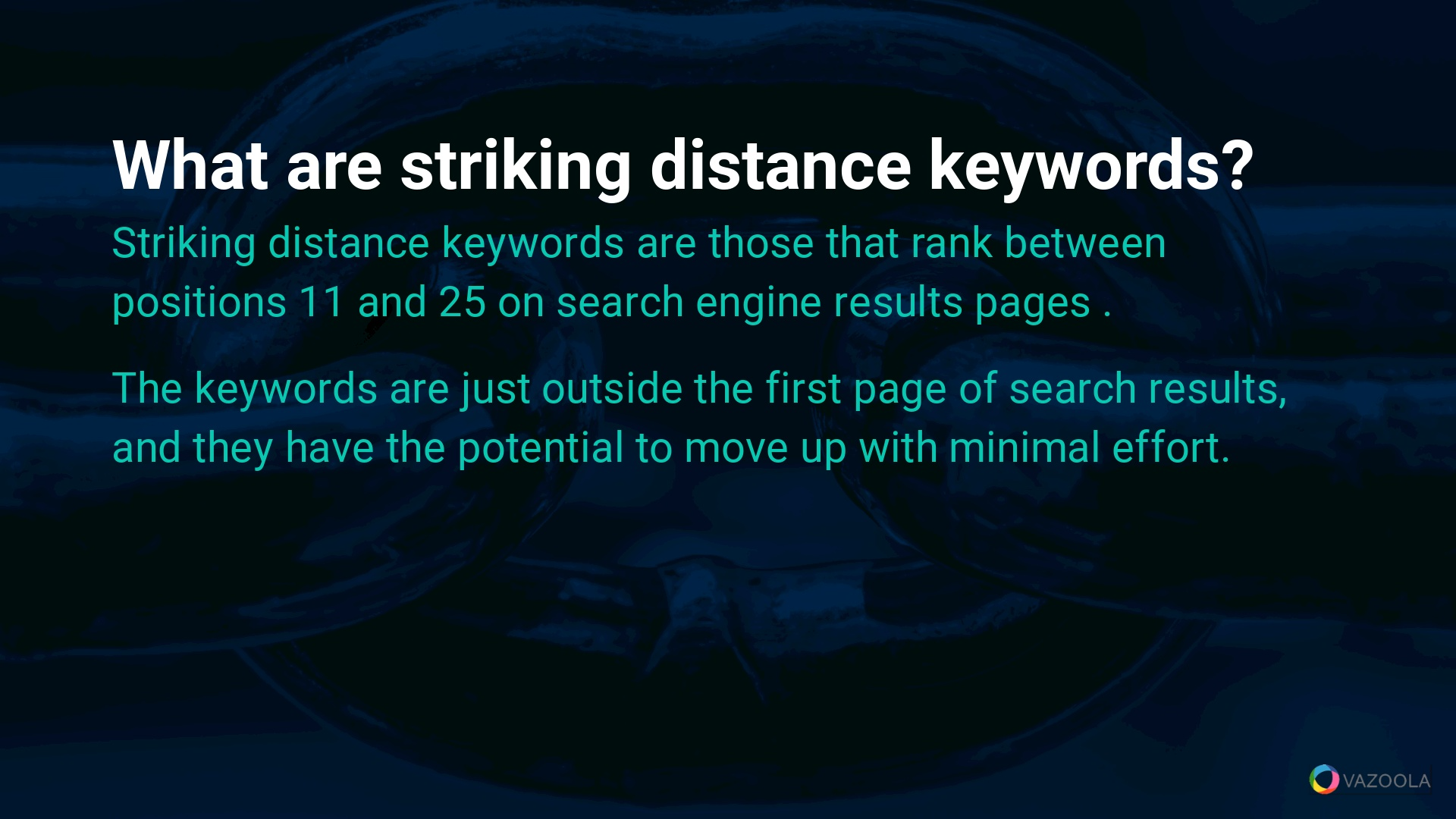
Exactly what are striking distance keywords? You might have heard the term, but do you know how to harness its power to boost your overall SEO efforts? What exactly is the striking distance meaning?
Striking distance keywords are those that rank between positions 11 and 25 on search engine results pages. Because the keywords fall just outside the desired first page of search results, they have the potential to move up with minimal effort.
Of course, reaching the first page of search results is akin to hitting the jackpot of any SEO campaigns. So, targeting striking distance keywords can be a strategic move to improve organic search visibility and drive more traffic.
Why Striking Distance Keywords Matter
Why do striking distance keywords matter?
Striking distance keywords are valuable because they are already performing well. They just need a little push in the right direction to reach top rankings.
By focusing on these targeted keywords, you can improve search engine rankings with relatively small optimizations. Striking distance keywords, therefore, offer a high return on investment.
Instead of wasting time trying to improve the rankings of low-performing keywords – something both time-consuming and less effective – you can focus your efforts on more promising keywords.
Pro Tips:
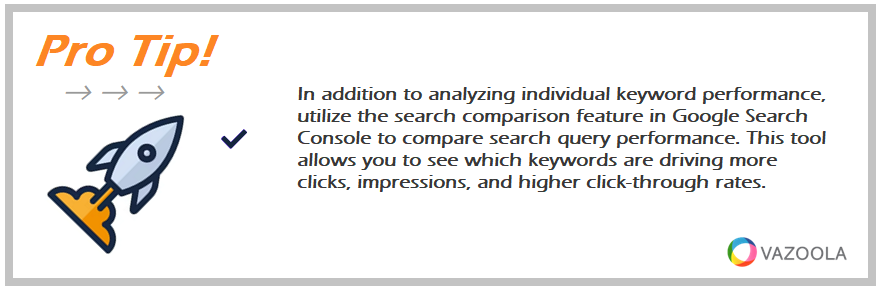
In addition to analyzing individual keyword performance, utilize the search comparison feature in Google Search Console to compare search query performance. This tool allows you to see which keywords are driving more clicks, impressions, and higher click-through rates.
The GSC Advantage
How does Google Search Console work?
Google Search Console provides unique insights into keyword performance. Among other data points, it shows which keywords are performing well but haven’t quite reached the top.
By analyzing GSC data, you can identify striking distance keywords. You then can prioritize them in your link-building efforts.
With GSC, you can see the exact search queries that bring traffic to your site, the pages that rank for these queries, and how your site performs in various search results.
Such valuable information is crucial for making informed decisions about which keywords to target and how to optimize your pages for better rankings.
Pro Tips:
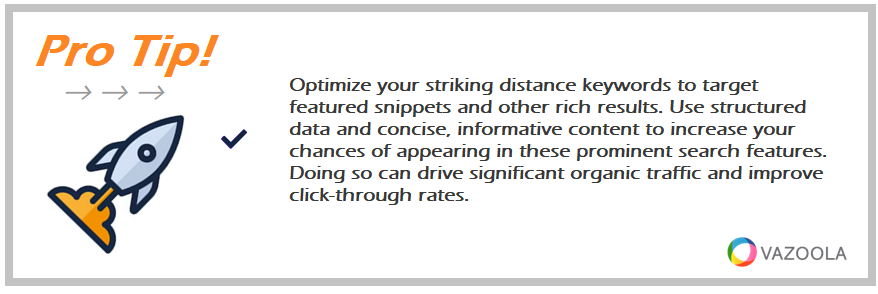
Optimize your striking distance keywords to target featured snippets and other rich results. Use structured data and concise, informative content to increase your chances of appearing in these prominent search features. Doing so can drive significant organic traffic and improve click-through rates.
How to Use Google Search Console
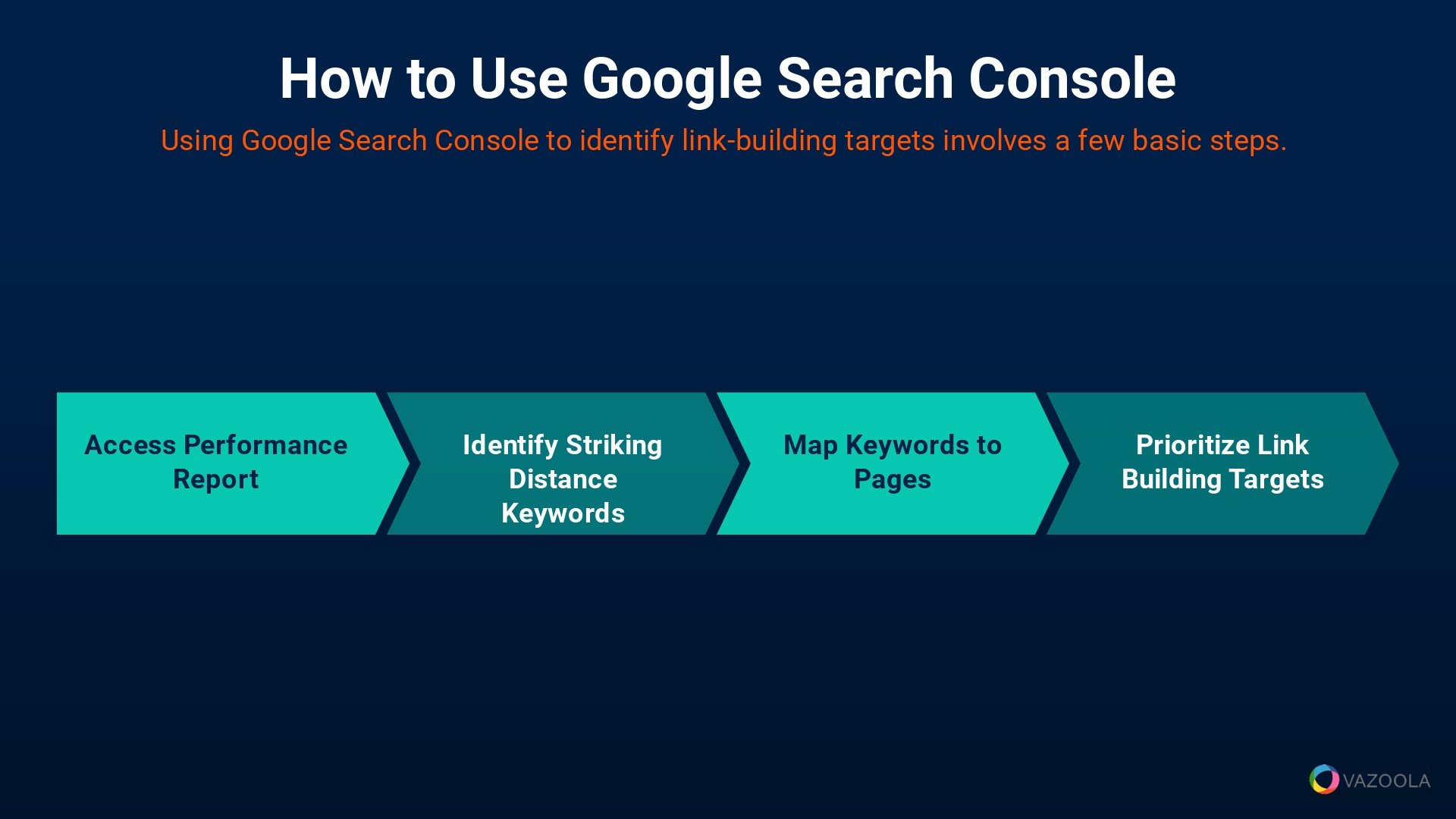
Using Google Search Console to identify link-building targets involves a few basic steps. Here's a detailed guide on how to do it effectively.
Step 1: Access the Google Search Console Performance Report
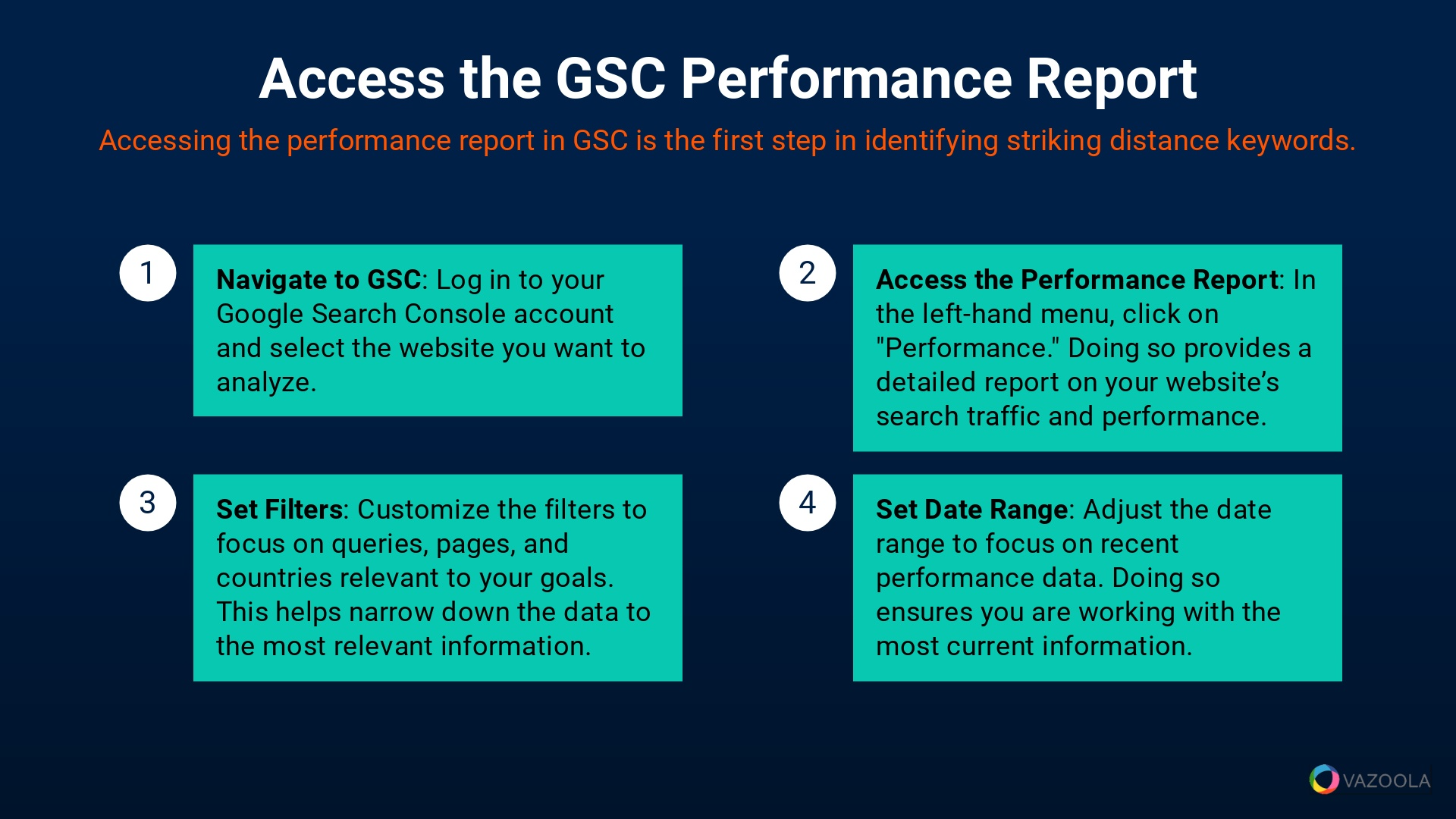
Accessing the performance report in GSC is the first step in identifying striking distance keywords. The report provides an overview of your site’s search traffic and performance, essential for pinpointing keywords that are close to achieving top rankings.
How do you access the performance report in GSC? Four simple steps will help you meet your goal:
-
Navigate to GSC: Log in to your Google Search Console account and select the target URL example that you want to analyze.
-
Access the Performance Report: In the left-hand menu, click on "Performance." Doing so provides a detailed report on your website’s search traffic and performance.
-
Set Filters: Customize the filters to focus on Google Search console queries, pages, and countries relevant to your goals. This helps narrow down the data to the most relevant information.
-
Set Date Range: Adjust the date range to focus on recent performance data. Doing so ensures you are working with the most current information.
By accessing the Google Search Console report, you can get an overview of how your site is performing in search results. The report shows Google search analytics metrics like clicks, Google Search Console impressions, click-through rate, and average position, all needed to identify striking distance keywords.
Pro Tips:
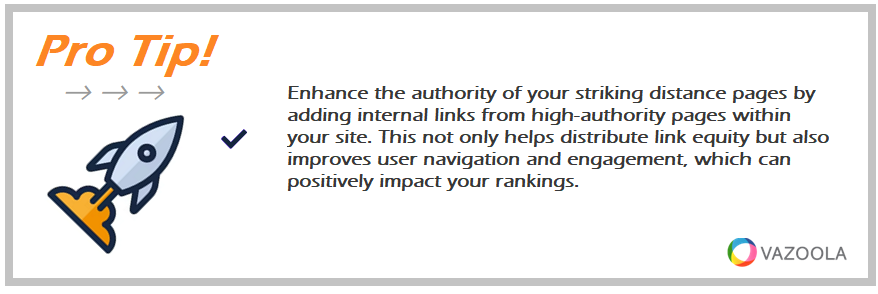
Enhance the authority of your striking distance pages by adding internal links from high-authority pages within your site. This not only helps distribute link equity but also improves user navigation and engagement, which can positively impact your rankings.
Step 2: Identify Striking Distance Keywords
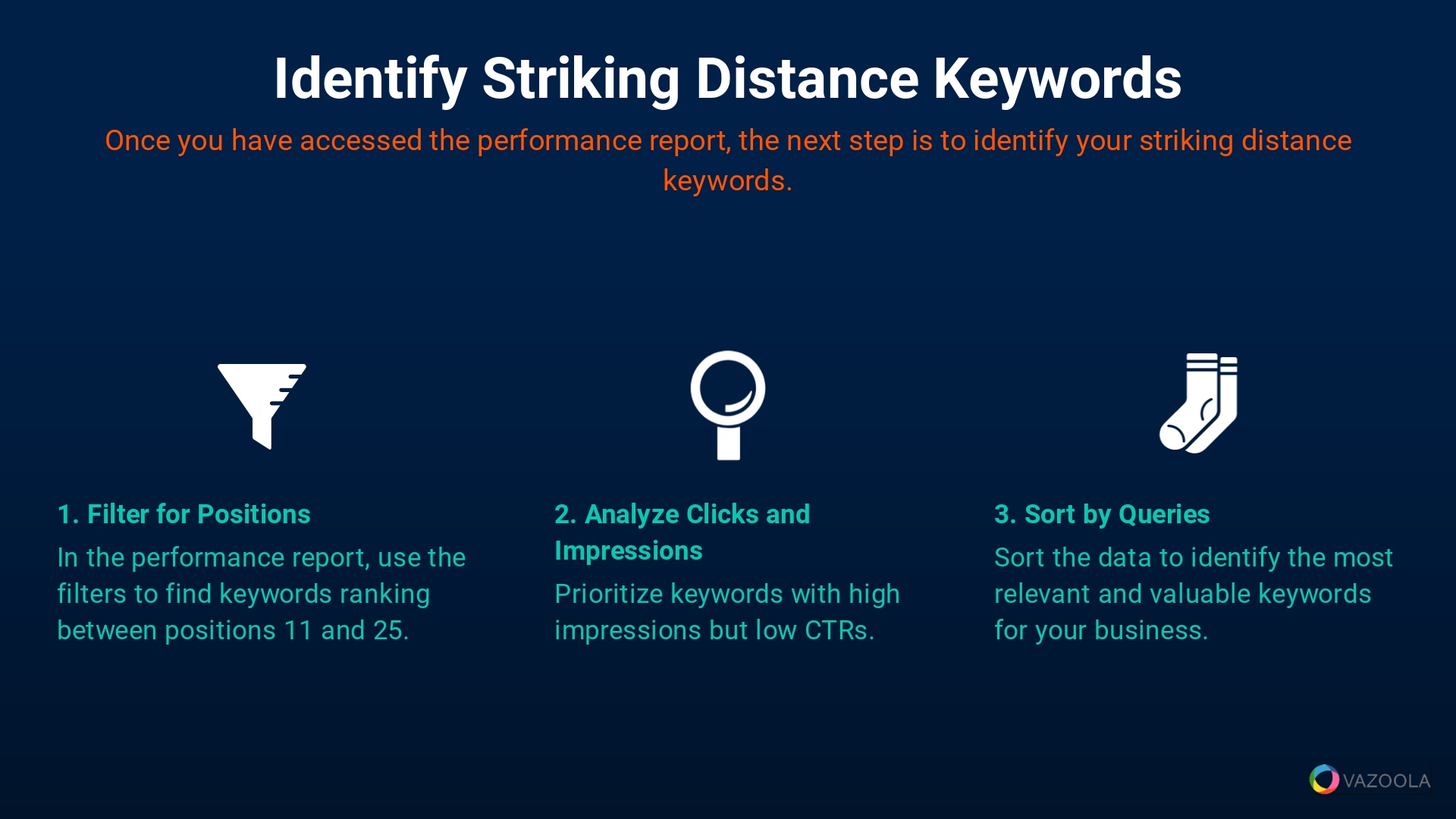
Once you’ve accessed the Google Search performance report, it’s time to identify striking distance keywords. On the cusp of reaching the top of search results, these keywords can be targeted for strategic link-building efforts.
You can identify striking distance keywords using GSC in three simple steps:
-
Filter for Positions: In the performance report, use the filters to find keywords ranking between positions 11 and 25. These are your striking distance keywords.
-
Analyze Google Searches, Clicks and Impressions: Prioritize keywords with high impressions but low CTRs. High impressions indicate that the keyword has potential, while a low CTR suggests there’s room for improvement.
-
Sort by Queries: Sort the Google Search Console metrics to identify the most relevant and valuable keywords for your website. Focus on keywords that are closely related to your brand, products or services.
Filtering for positions 11 to 25 helps pinpoint the keywords that are close to achieving top rankings.
By analyzing clicks and impressions, you can prioritize the keywords that have the most potential to drive Google search traffic to your site.
Further, sorting data by queries lets you focus on the keywords most relevant to your business, making sure your link-building efforts are aligned with your content marketing goals.
Pro Tips:
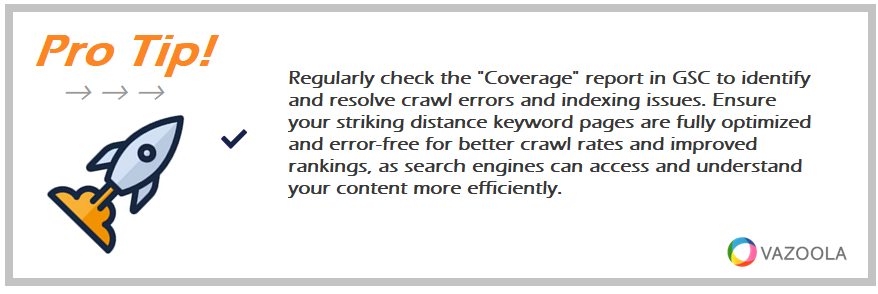
Regularly check the "Coverage" report in GSC to identify and resolve crawl errors and indexing issues. Ensure your striking distance keyword pages are fully optimized and error-free for better crawl rates and improved rankings, as search engines can access and understand your content more efficiently.
Step 3: Map Keywords to Pages
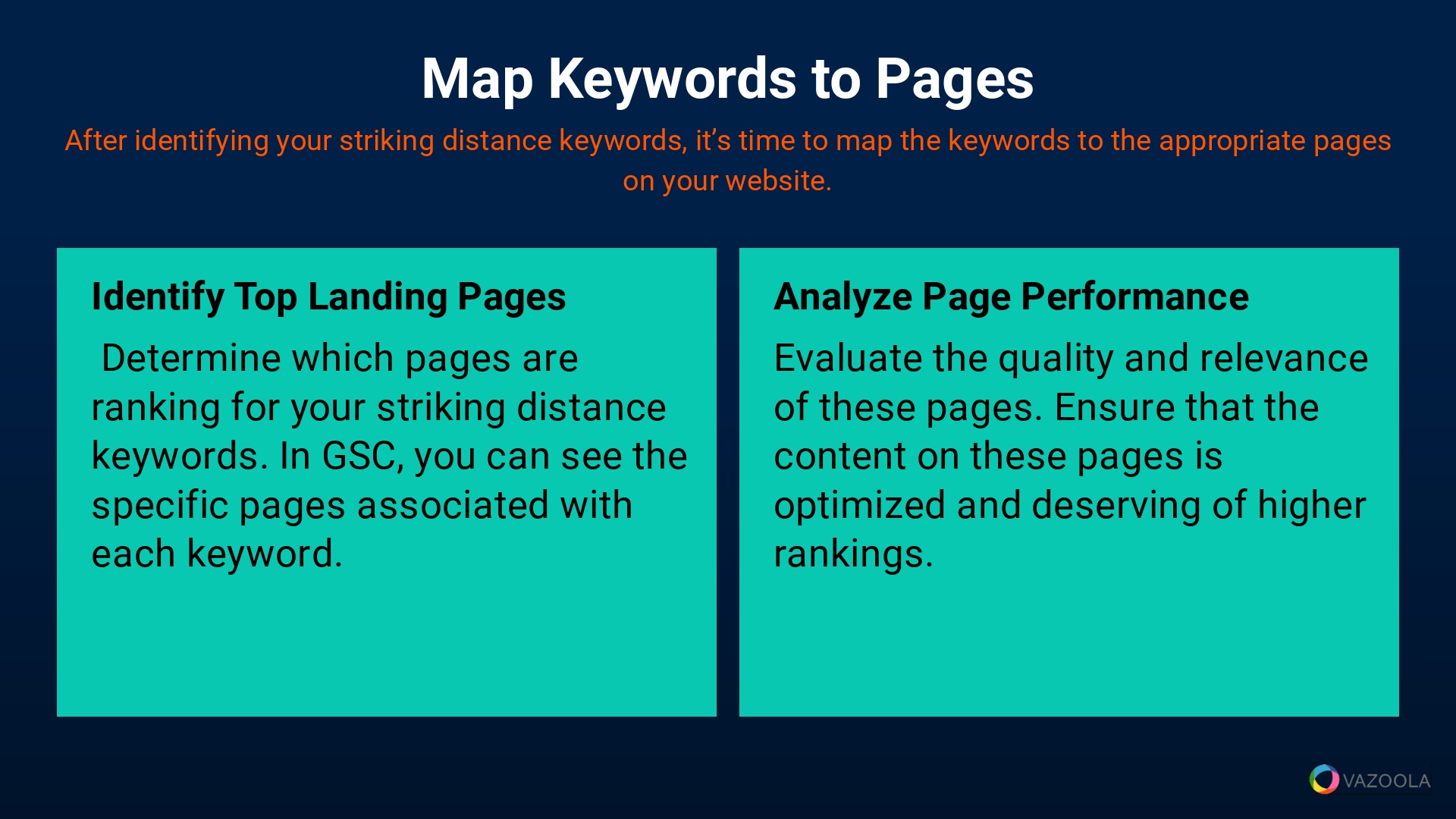
After identifying your striking distance keywords, it’s time to map the keywords to the appropriate pages on your website. Doing so helps you understand which pages need optimization and link-building to improve their rankings.
-
Identify Top Landing Pages: Determine which pages are ranking for your striking distance keywords. In GSC, you can see the specific pages associated with each keyword.
-
Analyze Page Performance: Evaluate the quality and relevance of these pages. Ensure that the content on these pages is optimized and deserving of higher rankings. Consider factors like content quality, user experience, and on-page SEO elements.
Mapping keywords to pages helps you understand which pages need optimization and link-building services.
By identifying the top landing pages for your striking distance keywords, you can focus your efforts on improving these pages.
Pro Tips:
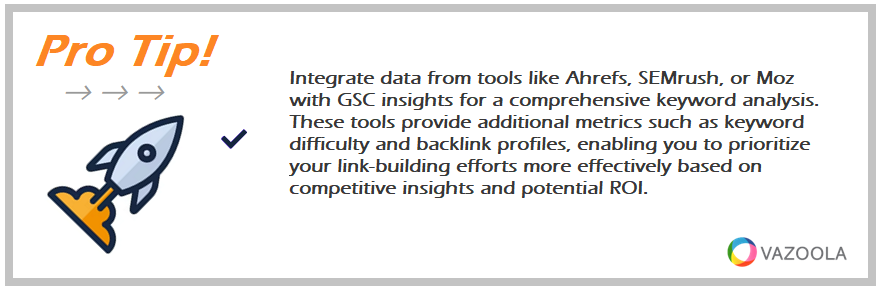
Integrate data from tools like Ahrefs, SEMrush, or Moz with GSC insights for a comprehensive keyword analysis. These tools provide additional metrics such as keyword difficulty and backlink profiles, enabling you to prioritize your link-building efforts more effectively based on competitive insights and potential ROI.
Step 4: Prioritize Link Building Targets
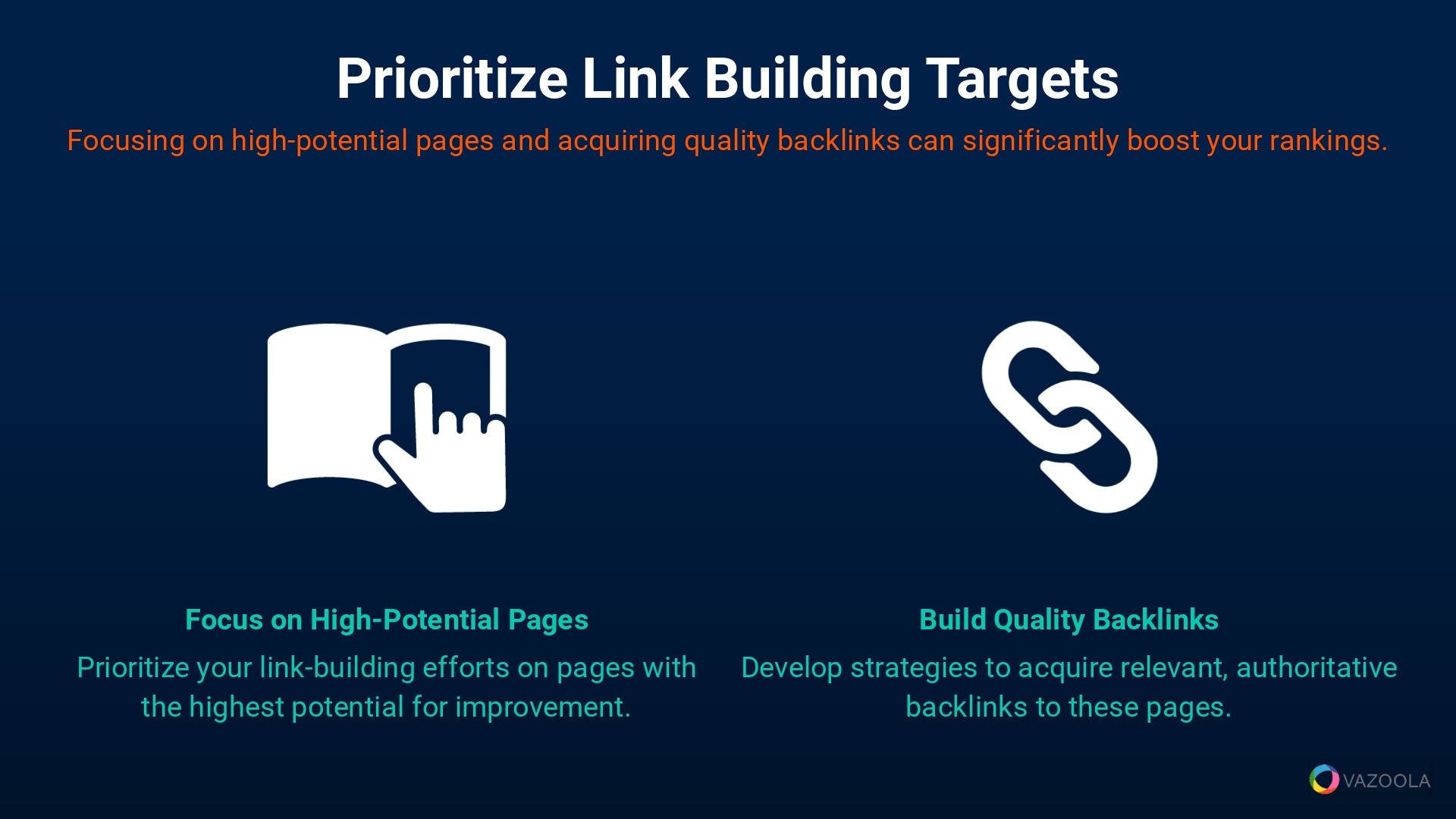
The final step in using GSC to identify link-building targets is to prioritize your link-building efforts. Focusing on high-potential pages and acquiring quality backlinks can significantly boost your rankings.
-
Focus on High-Potential Pages: Prioritize your link-building efforts on pages with the highest potential for improvement. These are often pages with high impressions but low CTR.
-
Build Quality Backlinks: Develop strategies to acquire relevant, authoritative backlinks to these pages. Quality backlinks can significantly improve the rankings of your striking distance keywords.
Focusing on high-potential pages allows you to make the most of your link-building efforts.
By prioritizing pages with high impressions but low CTR, you can target the pages that have the most potential for improvement.
Pro Tips:
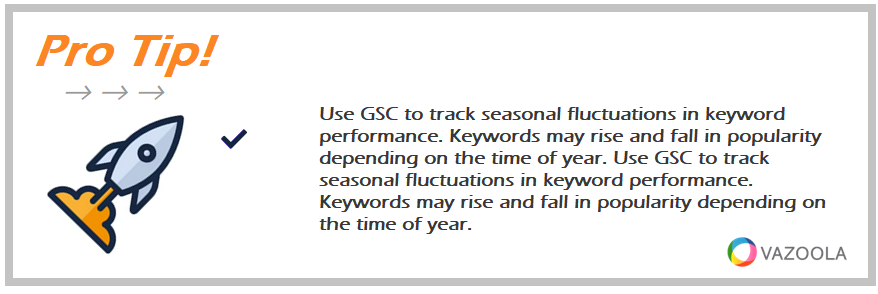
Use GSC to track seasonal fluctuations in keyword performance. Keywords may rise and fall in popularity depending on the time of year.
Identify Target Keywords With GSC
Using Google Search Console to identify link-building targets is a strategic way to improve your website’s organic search visibility.
When evaluating striking distance keywords in Google Search Console, pay close attention to impressions SEO. SEO impressions indicate how often your site appears in search results for specific queries.
High SEO impressions with low click-through rates can reveal keywords that are visible but not engaging enough users. By targeting these keywords with strategic link-building and content optimization, you can improve their rankings and increase the likelihood of users clicking through to your site.
By focusing on striking distance keywords and acquiring high-quality backlinks, you can propel your keywords to the top of search engine results.
Implementing these steps can help you achieve significant boosts in organic traffic and enhance your overall SEO efforts. Start leveraging GSC today to find and target the keywords that can make a real difference for your business.
Pro Tips:
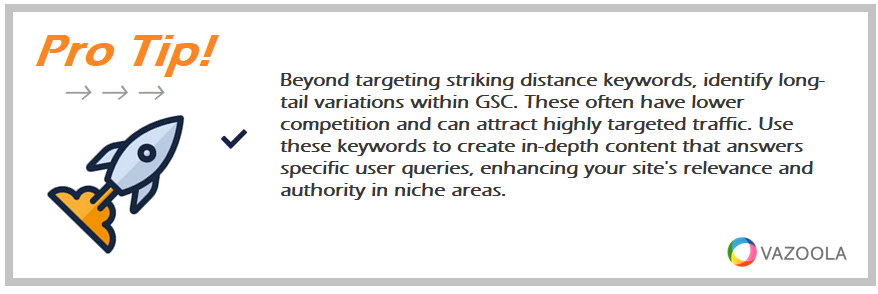
Beyond targeting striking distance keywords, identify long-tail variations within GSC. These often have lower competition and can attract highly targeted traffic. Use these keywords to create in-depth content that answers specific user queries, enhancing your site's relevance and authority in niche areas.

